Skiing goes ahead as usual despite deaths
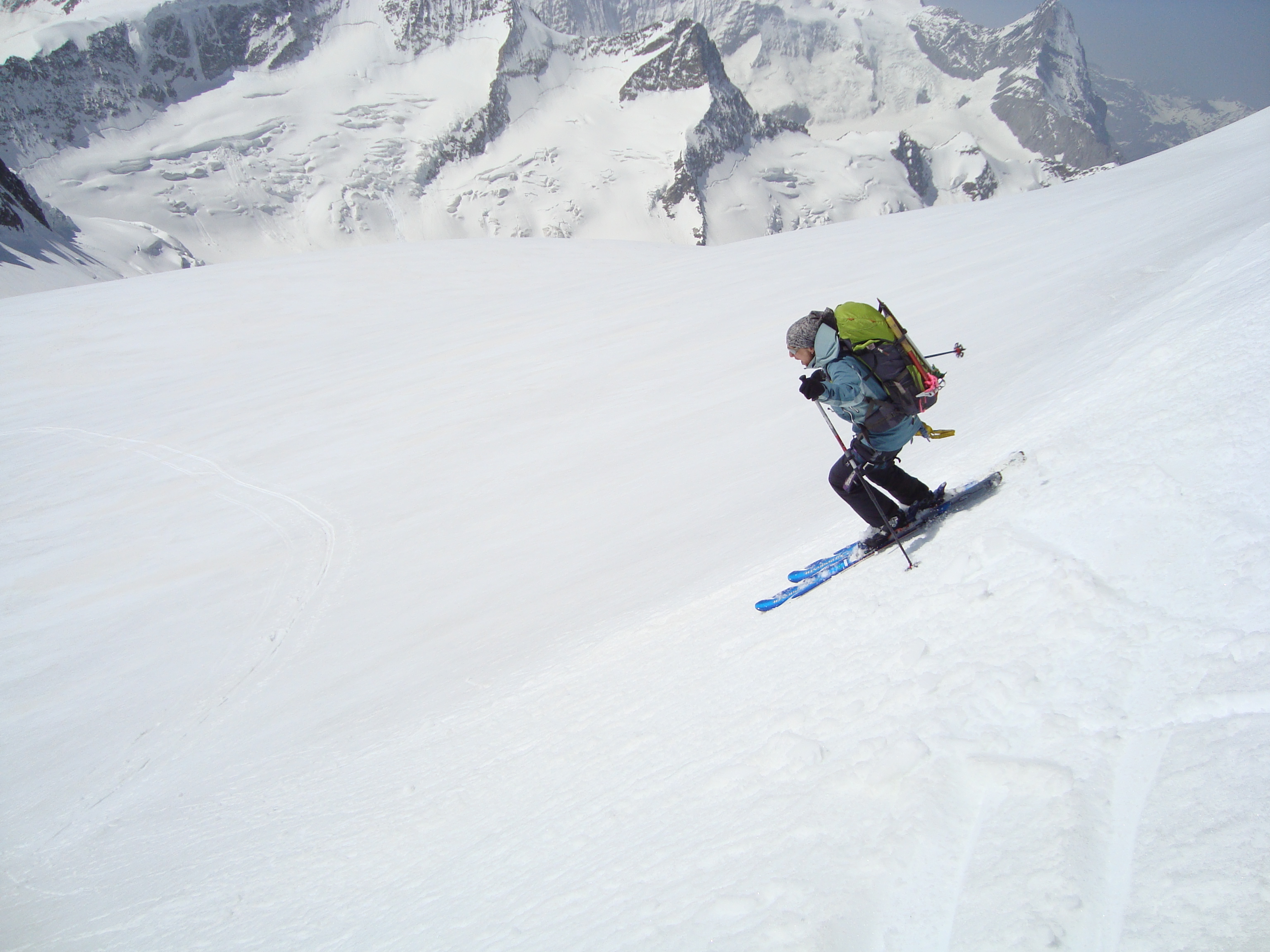
The death of seven skiers in an avalanche on January 3 is unlikely to lead to sanctions or measures to keep people from entering potential danger zones in mountainous areas.
On average, 14 ski mountaineers die in the Swiss Alps every year making last week’s single-day toll all the more shocking.
Ski mountaineers, also known as backcountry skiers or ski tourers, are aware of the dangers they face each morning when they head into the mountains to walk up a virgin slope, and ski back down through powder.
Before they leave home, they’ve chosen a mountain to climb from a 1:50,000 scale map detailing ski touring routes, and consulted the daily avalanche bulletin for the area, as well as checked to make sure all their rescue gear is in order.
Besides a change of undershirts, snacks and a thermos of hot tea or coffee, a typical skier’s backpack is filled with an array of high-tech, lightweight tools including a shovel, transceiver, and avalanche probe.
The shovel’s blade is detachable and its handle telescopic. The transceiver resembles a fat Smartphone that either sends out a signal from someone buried under the snow, or receives beeps from the trapped person. The collapsible probe can be extended to a length of between two and three metres to poke under the snow once the transceiver pinpoints the approximate location of the avalanche victim.
The rescue gear is essential since forecasting the stability of snow-covered slopes is anything but an exact science. And even if knowledge and equipment have improved, avalanches still kill up to up to 25 people a year in the Swiss Alps – more than half of them while ski mountaineering.
According to the Swiss Council for Accident Prevention, as many as 600 ski mountaineers are injured annually, either because they got caught in an avalanche or were involved in other kinds of accidents.
When disaster strikes
Due to the remote, inaccessible terrain these skiers travel in, the Swiss Air Rescue Service (Rega) is often called upon when disaster strikes.
Ariane Güngerich of Rega told swissinfo.ch that an average helicopter deployment costs between SFr3,000 and SFr3,500 ($2,890 – $3,370). Rega was involved in 37 avalanche operations last year.
Rega sends the bill to the person or persons rescued who normally forward it to their insurance companies. In Switzerland, the claims often go to the accident insurer Suva, the firm which provides coverage for around half of Switzerland’s workforce.
While Suva is obliged to pick up the rescue costs and medical bill, it reserves the right to cut by half the insurance allowance given to a person unable to return to work because they were disabled while skiing, if it deemed the risk taken by the skier was too great.
Suva takes into account weather conditions and the avalanche threat at the time of the accident as well as the steepness of the terrain.
Peanuts
However, Suva’s Claudio Casparis told swissinfo.ch that the money paid out in claims from unlucky ski mountaineers is “peanuts”. While Suva does not have any precise figures on ski mountaineering accidents, he says the costs are a drop in the bucket of the SFr1.7 billion paid out for all accidents that occur each year away from the workplace.
Even though it’s still not known what triggered January 3’s double avalanche, questions have been raised about the safety of ski mountaineering. The activity is the fourth deadliest sport practised in Switzerland.
There are concerns that many people setting out on backcountry tours put too much faith in the avalanche bulletin, unable themselves to evaluate the stability of slopes once they are on the mountain.
“It’s very difficult to pinpoint dangerous areas that should be avoided,” Christian Frischknecht of the Swiss Alpine Club (SAC) said in an interview with the Aargauer Zeitung newspaper. “A third of all avalanche accidents occur when the risk is rated as moderate.”
Frischknecht also hinted that many ski mountaineers may be taking additional risks because they do not know how to use the rescue equipment in their backpacks properly.
But there has been no indication Suva, Rega, or any government body want to see new measures introduced to lower the risk, even though the number of people heading into the mountains is on the rise.
Markus Aebischer of the SAC told swissinfo.ch that membership of the club is increasing by 3,000-4,000 a year and is now at 127,000.
The latest figures on the number of ski mountaineers in Switzerland are from 2003. At that time, there were 241,000 with 50,000 of them saying they practised the sport regularly.
Dale Bechtel, swissinfo.ch
1 low – avalanche possible only with high additional loads (e.g. groups of skiers without spacing, snowmobile), on very few extreme slopes. Only natural sluffs (small loose snow avalanches) and small avalanches possible.
2 moderate – triggering possible especially through high additional loads, mainly on steep slopes indicated in bulletin. Large natural avalanches not expected.
3 considerable – triggering possible even through low additional loads, mainly on steep slopes… In certain conditions, some medium and occasionally large natural avalanches possible.
4 high – triggering is probable even through low additional loads on many steep slopes. In certain conditions, many medium and multiple large natural avalanches are expected.
5 very high – many large natural avalanches are expected even in moderately steep terrain.
Source: Swiss Federal Institute for Snow and Avalanche Research (SLF)
According to the SLF, a person buried by an avalanche has an 80% chance of survival if freed from the snow within the first 15 minutes.
The survival rate drops to 40% after 30 minutes and only 25% after an hour.
In a study conducted by the SLF, improved equipment and better awareness of what to do has led to a significant drop in the number of people killed by avalanches.
At the end of the 1970s, 60% of people caught in avalanches died. The figure is now 40%.

In compliance with the JTI standards
More: SWI swissinfo.ch certified by the Journalism Trust Initiative

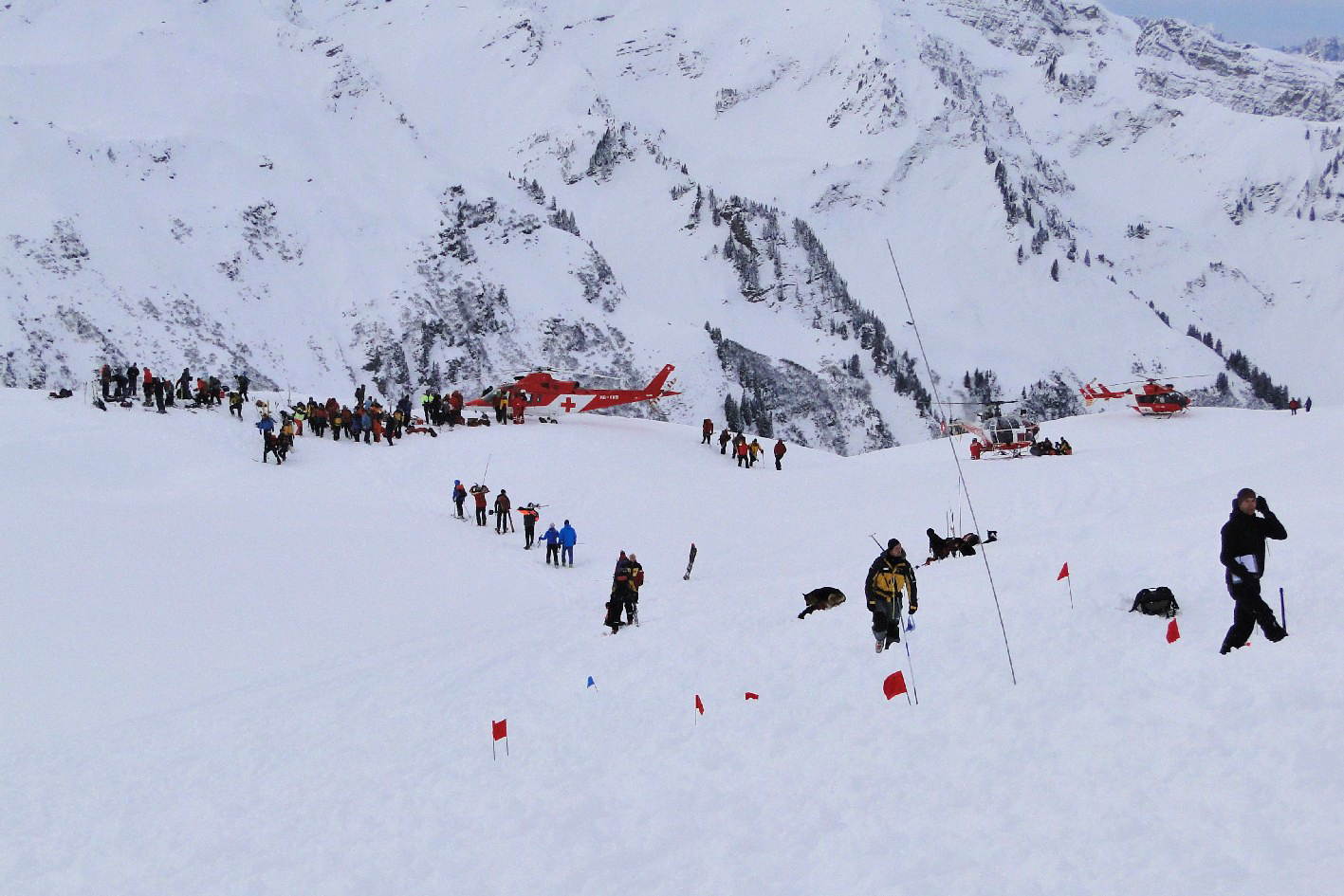
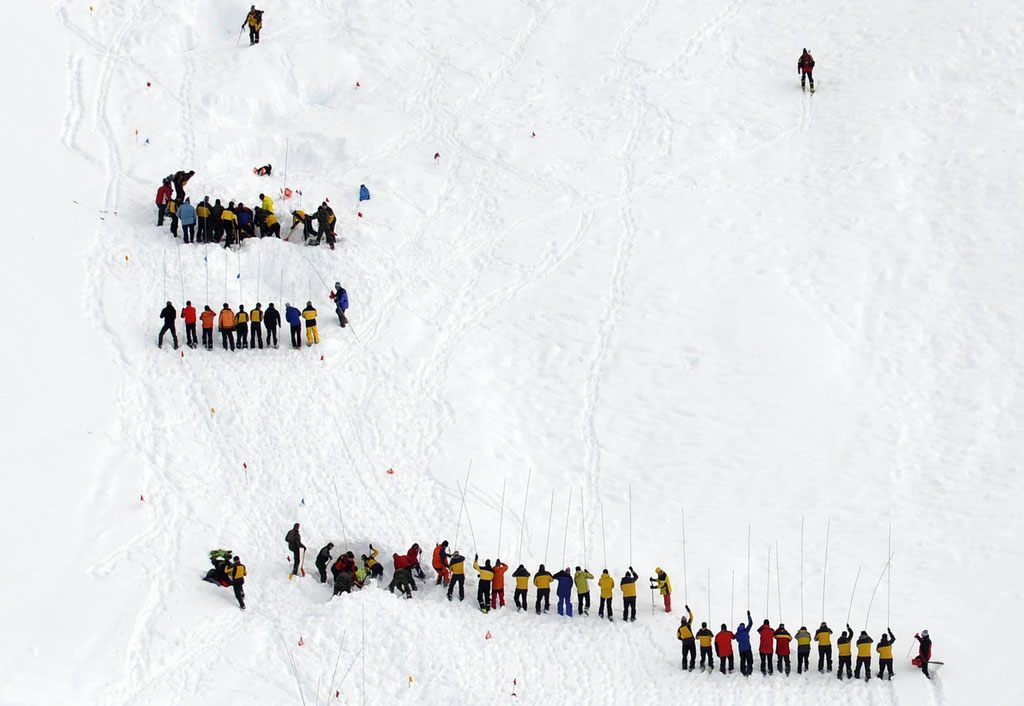
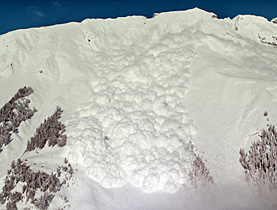
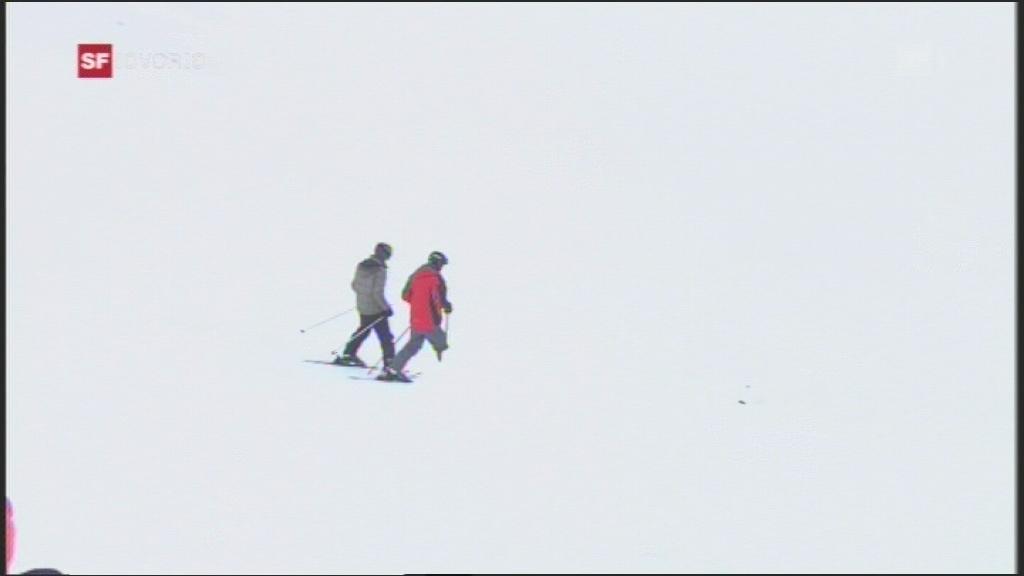
You can find an overview of ongoing debates with our journalists here . Please join us!
If you want to start a conversation about a topic raised in this article or want to report factual errors, email us at english@swissinfo.ch.